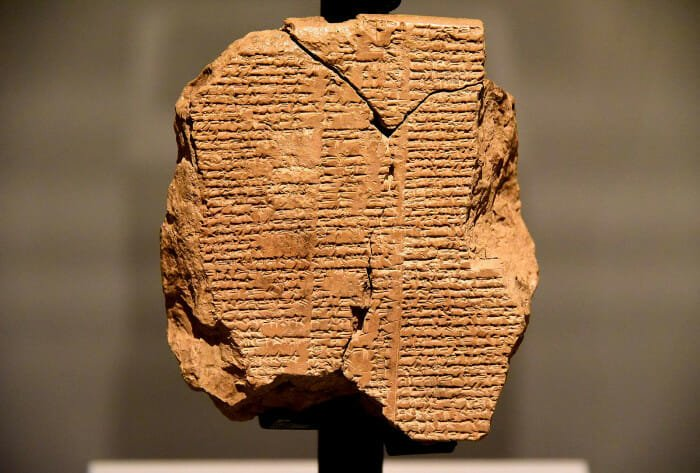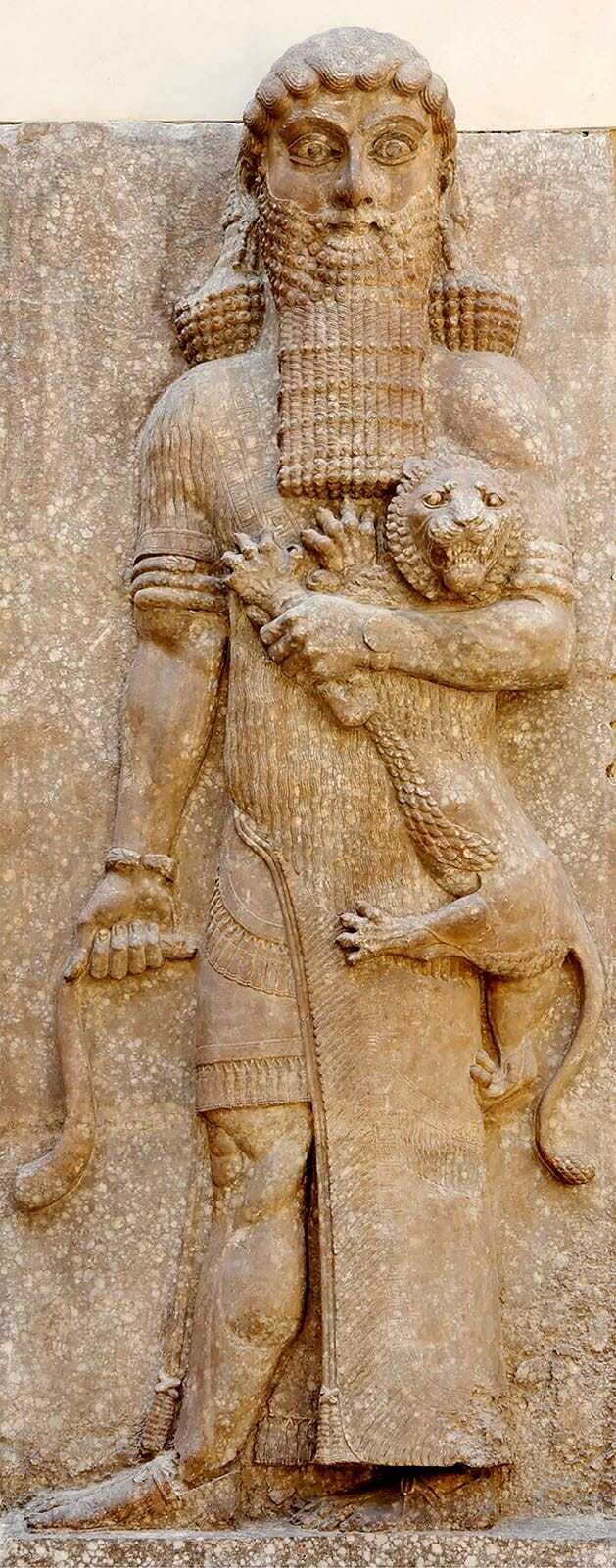The Epic of Gilgamesh is widely regarded as one of the oldest surviving works of literature, dating back over 4,000 years to ancient Mesopotamia (modern-day Iraq). This extraordinary literary masterpiece, carved in cuneiform script on clay tablets, offers a profound glimpse into the culture, beliefs, and values of early human civilization. The narrative weaves together myth, history, and the philosophical exploration of universal human themes, making it not only a historical artifact but also a timeless reflection on life, death, and the human condition.
Historical Background: The Origins of the Epic
The Epic of Gilgamesh originated in Sumer, one of the earliest civilizations, located in southern Mesopotamia (present-day Iraq). The earliest versions of the story appeared around 2100 BCE, though the most complete version dates from the 12th century BCE. The epic was written in Akkadian, the language of ancient Mesopotamia, but was based on much older Sumerian poems that chronicled the deeds of Gilgamesh, the semi-legendary king of Uruk.
The giant Gilgamesh depicted bearing a lion that appears no bigger than a cat
Gilgamesh is believed to have been a historical figure, a king who ruled the city of Uruk, one of the greatest cities of the Sumerian period. His reign is traditionally placed around 2800-2500 BCE, though the historical facts about his life have been heavily mythologized over time. As a literary figure, Gilgamesh is portrayed as a heroic, yet deeply flawed, character who embarks on an epic journey in search of immortality, personal growth, and understanding of life’s greatest mysteries.
The Story of Gilgamesh
The epic begins with Gilgamesh as a young and arrogant king, unmatched in strength and power, yet known for his tyranny over the people of Uruk. Concerned about his unchecked ambition, the gods create Enkidu, a wild man who lives in harmony with nature, to challenge Gilgamesh. After a fierce battle, the two become close friends, and their friendship forms one of the central relationships of the epic.
Together, Gilgamesh and Enkidu embark on a series of heroic adventures. They slay the monstrous guardian Humbaba, defeat the Bull of Heaven sent by the goddess Ishtar, and achieve great fame for their exploits. However, the gods, displeased by their defiance, decree that Enkidu must die. Enkidu’s death plunges Gilgamesh into profound grief and sparks his existential quest for immortality.
Desperate to avoid the fate that claimed his friend, Gilgamesh travels to the ends of the earth in search of Utnapishtim, a man who survived a great flood (paralleling the biblical story of Noah’s Ark) and was granted eternal life by the gods. Gilgamesh’s journey is filled with trials and challenges, but ultimately, he learns that immortality is beyond human reach. The wisdom he gains leads him to accept the inevitability of death and focus on living a meaningful life.
Themes and Philosophical Insights
The Epic of Gilgamesh delves deeply into themes that are still relevant today, making it a timeless piece of literature. One of the most significant themes is the human confrontation with mortality. Gilgamesh’s quest for eternal life reflects humanity’s age-old fear of death and the desire to overcome it. However, the epic’s message is clear: death is an inescapable part of life, and true immortality lies in the legacy one leaves behind.
Another central theme is friendship. The bond between Gilgamesh and Enkidu highlights the transformative power of relationships. Through his friendship with Enkidu, Gilgamesh evolves from a selfish and ruthless ruler into a more compassionate and wise leader. Enkidu’s death becomes the catalyst for Gilgamesh’s personal growth and his journey toward self-realization.
The epic also explores the relationship between humans and the divine. Gilgamesh frequently interacts with gods and goddesses, whose actions shape his destiny. The gods in Mesopotamian mythology are powerful but capricious, often acting in ways that are unpredictable and unjust. This reflects the Mesopotamian worldview, where the forces of nature and the divine were believed to be beyond human control.
The Tablets and Their Discovery
The Epic of Gilgamesh was lost to history for centuries until it was rediscovered in the mid-19th century. British archaeologist Austen Henry Layard uncovered the library of King Ashurbanipal at Nineveh, the capital of the Assyrian Empire, in modern-day Iraq. Among the ruins, archaeologists discovered thousands of clay tablets, including the twelve that contain the most complete version of the Epic of Gilgamesh.
These tablets were written in cuneiform, one of the earliest systems of writing, and were composed in the Akkadian language. They are now housed in the British Museum, though fragments of the epic have been found in various locations across Iraq, Syria, and other regions that were once part of the ancient Mesopotamian world. Over time, scholars have pieced together the text from different fragments, revealing the full richness of this ancient epic.
Cultural and Historical Significance
The significance of the Epic of Gilgamesh goes far beyond its status as the oldest known piece of literature. It provides valuable insights into the worldview, religion, and social values of ancient Mesopotamia. The epic paints a vivid picture of life in one of humanity’s first great civilizations, describing its cities, rulers, and the relationship between humanity and the gods.
Additionally, the story of Gilgamesh has parallels with other ancient narratives, most notably the flood story that appears in the Hebrew Bible and other ancient texts. The figure of Utnapishtim, who survives the flood by building a boat, bears a striking resemblance to Noah, suggesting that the Mesopotamian version may have influenced later traditions.
Moreover, the Epic of Gilgamesh continues to inspire contemporary literature and art. Its themes of friendship, mortality, and the quest for meaning resonate with readers across time and cultures. Authors, poets, and scholars have drawn from its rich symbolism and timeless message, ensuring its place as a foundational text in world literature.
The Epic of Gilgamesh stands as a testament to the enduring power of storytelling. Over four millennia after its creation, it continues to speak to the deepest concerns of the human experience—our fear of death, our search for meaning, and the transformative power of friendship. Housed in fragments in museums worldwide, including in Iraq, the epic remains a vital part of our shared cultural heritage, connecting us to the ancient people who first wrote it down and reminding us of the timelessness of the human condition.
This ancient masterpiece, rediscovered after being lost for centuries, remains a pillar of world literature. Its universal themes and philosophical depth have allowed it to transcend time and geography, cementing its place as the world’s oldest and one of its most profound literary works.








